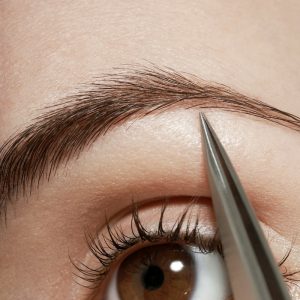What is Microblading?
Microblading is an eyebrow treatment technique in which the eyebrow is improved by the insertion of pigments into upper layer of the skin. The process is carried out using a tool that looks like a pen with 10 to 12 littles needles on its end. The needles are used to delicately scratch the surface of the skin, but do not penetrate the skin deeply. The needles are used to implant featherweight strokes into the epidermal layer of the skin to create fine, natural hair strokes.
Microblading is a technique that is used to extend the eyebrows, cover gaps in the eyebrow, or even do a complete reconstruction of the eyebrows (in a situation where there is no hair). The result of the microblading process is natural-looking and lifelike eyebrows in the shape and fullness desired.
Why Do People Get Microblading?
Microblading has become of the hottest trends in the beauty industry and many people are getting the treatment. After all, natural-looking realistic brows are desired by everyone.
• Loss of eyebrow hair
• Loss of shape and/or definition of the eyebrow hair
• Thin eyebrows caused by prolonged tweezing and plucking
• Alopecia or chemotherapy
• Gaps in the eyebrow
• Scars in the eyebrow
• Lengthening of the tails of the eyebrows
• Thickening of thin eyebrows
• Asymmetry in the eyebrows
• Trouble with the application of conventional makeup
• Active lifestyles
Rules Associated With Microblading
There are rules to abide by before, during, and after microblading to ensure you prepare yourself for the process and care for your eyebrows after the process is completed.
When preparing for the microblading treatment.
• Don’t pick, wax or tweeze one week before the treatment
• No sitting in the sunlight two weeks before the treatment
• No facials two weeks before the treatment
• Stop using Vitamin A products one month before the treatment
• Avoid botox three weeks before the treatment
• No use of natural blood thinners (e.g. fish oil) one week before the treatment
• No waxing or tinting of eyebrows three days before the treatment
• Do not drink alcohol 24 to 48 hours before the treatment
• No taking of ibuprofen or aspirin 24 hours to your appointment
On the day of the microblading treatment
•no exercising
• No drinking of coffee two hours to your appointment
After the microblading treatment
• Wash your eyebrows gently with water and an antibacterial soap for the next 7 days every morning and night
• Rinse all soap away and pat your eyebrows gently with a tissue to not remove the pigment
• Do not use acid-containing cleansers or exfoliants
• Apply little quantity of rosehip oil or coconut oil to your eyebrows every morning and night for the next 7 days
• Do not expose yourself to direct sunlight for one week after the treatment
• No botox, facials or peels for one month after the treatment
• Do not go swimming, long steamy showers, or exercising for one week after the treatment
• No wearing of makeup on the brows till they’re completely healed
Benefits of Microblading

After the microblading is done and your eyebrows have healed, the time it will take you to get ready every morning will reduce. The time you were supposed to spend making up your eyebrows will no longer be needed because your eyebrows will already be in tip-top shape. Microblading was initially developed for cancer patients that lost their eyebrow due to chemotherapy. It is now beneficial to anyone who experiences lack of hair growth or a loss of hair in the brows. With microblading, it is difficult, if not impossible, to tell that a person has had any medical procedure at all.
For those who have active lifestyles and engage in regular physical activities, they have nothing to worry about with regard to their eyebrows. Even when regular eyebrow makeup smudges or smears off, the eyebrow from the microblading process remains intact! Microblading last about one and half hours and gives you great natural looking eyebrows that last up to three years. What a bargain! Compare that to five minutes spent on eyebrow makeup daily for three years. Microblading, when done by a professional microblading artist is a safe procedure. Furthermore, the process is virtually pain-free. The microblading pigments are organic and do not change colour. They only lose saturation slowly, which can be fixed in a short touch-up session.




